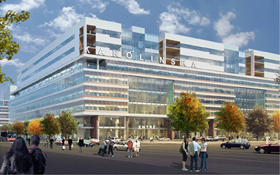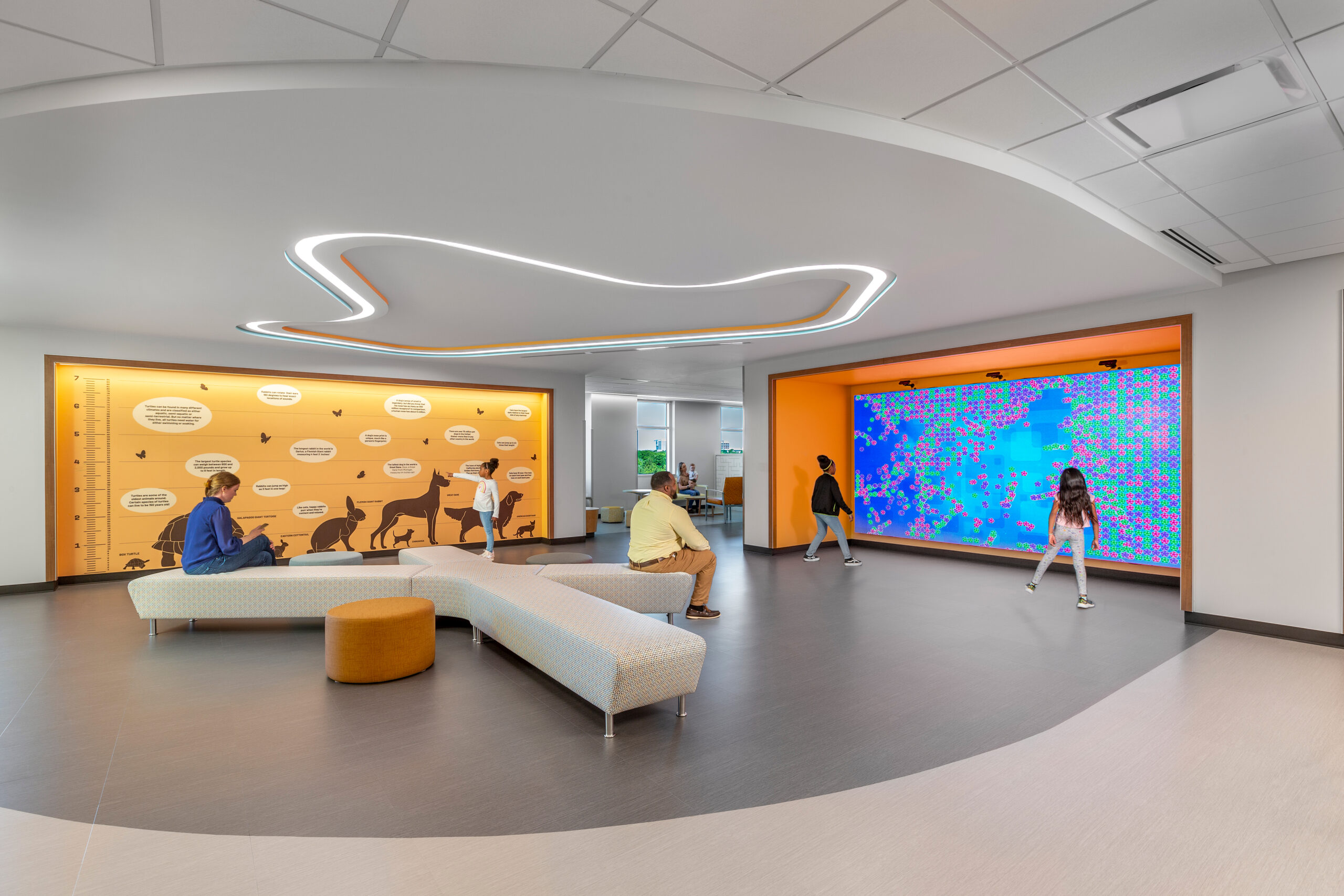 PROJECT HIGHLIGHTS
PROJECT HIGHLIGHTS
Name: New Karolinska Hospital (NKS)
Location: Stockholm, Sweden
Cost: $2.5 billion
Construction Start Date: August 2010
Completion: 2016
• 600 beds
• 35 operating rooms
• 8 radiation bunkers
• 100-bed patient hotel
STOCKHOLM, Sweden — With a completion date still nearly five years away, construction is progressing on schedule for the 2016 opening of a 3.5 million square foot hospital in Stockholm, Sweden.
The $2.5 billion New Karolinska Solna (NKS) Hospital will be an ultra-modern 600-bed university hospital that will contain 100 outpatient beds, 35 operating rooms and eight radiation bunkers. Also included will be a hospital building, technology building, research facility and a 100-bed patient hotel and parking structure.
Built under a unique public-private partnership with Skanska as project developer and contractor, NKS is owned by the Stockholm County Council, a government entity responsible for providing health care and public transport to greater Stockholm. Skanska is responsible for financing and financial maintenance — with investment partner Innisfree — for 25 years.
Construction began in August 2010 and is being conducted in numerous phases with various buildings to be operational at different times.
“The largest challenge so far has been to start up a project of this scale,” says Pär Olsson, Skanska’s project director. “We have built a large organization that consists of employees from many organizations and different countries. Our employees speak different languages and are used to different working methods. To staff the project, we have mainly used internal Skanska resources and Skanska’s network.”
In a joint venture, Sweden’s White Architects and Tengbom Architects designed the hospital, which will reflect a new, more patient-focused approach to health care delivery based on evidence-based design, operational efficiency and sustainability. It will meet health care and research demands for the next century with buildings durable and flexible enough to incorporate new technological advances.
“This puts high demands on our design since we need to prepare for potential rebuilding that is not even considered today,” says Kjell Klasa, Skanska’s technical manager. “We also have a unique emergency power solution. The hospital has a demand for 100-percent redundancy, which means that we need to find extreme robust installations — for example, medical mechanical, gases and electrical systems. NKS is the only hospital [in Sweden] with such a requirement.”
NKS’s mission is to be a world-class university hospital and global leader in environmentally friendly applications and be a place for translational medicine where the interaction between health care, research and education can be strengthened.
And with a goal to achieve LEED gold certification, the hospital will be built and operated with the lowest environmental impact possible. It also intends to have as near a zero-impact rating regarding greenhouse gas pollution as possible, even for backup power generators.
Skanska estimates that NKS’s estimated energy requirement will be 124 kWh/m2/year — about half the power a hospital this size normally uses. Nearly 100 percent of its energy needs will be derived from renewable sources with low carbon dioxide emissions. Additionally, all materials used during construction and the hospital’s operational lifecycle will be resource-efficient, such as the concrete used in wall, floor and ceiling foundations. Advance lighting control systems based on daylight coming into the building will save energy thanks to a controlled ventilation system that will enhance air quality.
The largest challenge to date has been the level of completed design during the financial close of the project.
“We have worked with an expedited schedule, meaning that the clinical design has progressed in parallel with the technical design at the same time as construction,” says Klasa. “Normally, clinical design and technical design are completed before construction starts. We have worked with all three processes at the same time.”
The team has overcome challenges encountered so far by developing a defined reviewable design data process involving all parties in design matters. Stockholm’s Läns Landsting, the health authority and the client, contributed with knowledge and expertise about future health care and how the hospital will operate. Swedish Hospital Partners, the project company, evaluated the solution from a lifecycle-cost perspective.
Adds Klasa, “By combining all of these inputs, we can ensure that we will deliver a world-class hospital that will provide the preconditions for the client to supply excellent health care for its patients.”





